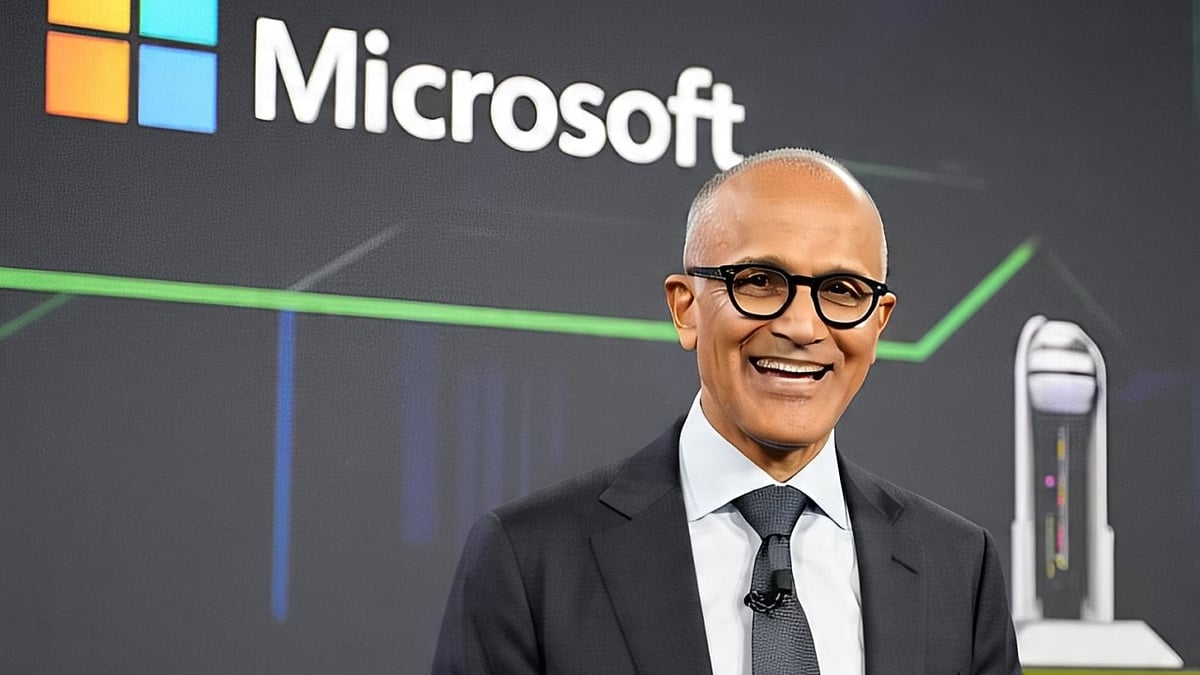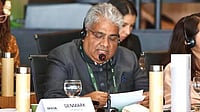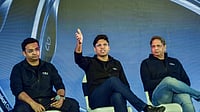Microsoft Build 2025 LIVE: When, Where and How to Watch
Microsoft’s annual Build developer conference is set to take place from May 19 to 22, 2025, in Seattle, with a focus on new AI integrations, services and applications including enhancements for Windows.
The four-day event will kick off on May 19 at 8:45 a.m. PT (9:15 p.m. IST) and conclude on May 22. The opening keynote, led by CEO Satya Nadella and CTO Kevin Scott, will be livestreamed on Microsoft’s YouTube channel for a global audience starting at 9:00 a.m. PT (9:30 p.m. IST). You can also watch the keynote live via the video embedded at the end of the referenced article.
Microsoft Build 2025 LIVE: Copilot Expected to Take Centre Stage
At Build 2025, Copilot is expected to take centre stage with significant enhancements reflecting Microsoft’s evolving AI strategy.
As tensions with OpenAI grow, Microsoft is reportedly testing alternative AI models from xAI, Meta, Anthropic and DeepSeek to potentially replace OpenAI’s technology in Copilot. This shift aims to reduce dependency on OpenAI and enhance Copilot’s performance and cost-efficiency.
Microsoft Build 2025 LIVE: Satya Nadella Announces Copilot is Now Open Source
Microsoft CEO Satya Nadella at Build 2025 announced that Copilot will now be open source at VS code. He stated that the AI powered capabilities of Copilot will directly be integrated to VS code.
Microsoft Build 2025 LIVE: Github Copilot will Now have Agent Mode and MCP Support
Microsoft has made a new coding agent available on GitHub. Said agent will also assist developers with problem fixes. It can have filters for user group size, among other things. In summary, this (like most of the announcements at Build) is intended to make developers' jobs easier with artificial intelligence.
Microsoft Build 2025 LIVE: Coding Agent Integrated in Github
At Microsoft Build 2025, Microsoft introduced a new GitHub Copilot coding agent, designed to function as an autonomous peer programmer, enhancing developer productivity through AI. This agent, now available in Visual Studio Code, excels at tasks like adding features, fixing bugs, refactoring code, and improving documentation in well-tested codebases. It leverages the Model Context Protocol (MCP) to connect AI models to external data and tools, enabling it to analyze codebases, propose edits, run terminal commands, and auto-correct errors iteratively. The agent can also process multimodal inputs, such as screenshots of bugs or mockups, and logs its actions in GitHub issues for team review.
Microsoft Build 2025 LIVE: Sam Altman Joins the Keynote, Briefs About Future of Software Engineering
During the Microsoft Build 2025 keynote on May 19, OpenAI CEO Sam Altman joined virtually to discuss the rapid evolution of AI and its impact on software engineering. He highlighted how AI development has accelerated, noting that workflows have adapted significantly to leverage AI's advancements, with tools now far more capable than they were a year ago. Altman emphasized that AI models, like OpenAI’s GPT-4o integrated into Microsoft’s Copilot and Azure AI, are becoming smarter, faster, and more reliable, enabling developers to tackle larger workloads through AI agents. Quoting Steve Jobs, he stated these tools “will just work,” underscoring their growing seamlessness.
Microsoft Build 2025 LIVE: Elon Musk's Grok3 Integrated to Microsoft Azure
Microsoft has teamed up with Elon Musk’s xAI to offer managed access to the Grok AI models Grok 3 and Grok 3 mini via its Azure AI Foundry platform, complete with Microsoft-standard service-level agreements and direct billing.
Originally touted by Musk as an “edgy,” unfiltered alternative willing to tackle controversial topics (even using profanity on cue), Grok has sparked controversy for behaviors like photo undressing, selective censorship, and injecting extremist content after unauthorized modifications. The Azure-hosted versions, however, are more tightly controlled and come with enhanced data integration, customization, and governance features beyond what xAI’s standalone API currently provides.
Microsoft Build 2025 LIVE: New Updates in Microsoft 365
At Microsoft Build 2025, Satya Nadella unveiled AI-driven updates for Microsoft 365. AI agents, powered by GPT-4o and Microsoft’s MAI models, analyze files from OneDrive, emails, and the web to deliver instant expertise to developers. Enhanced features in Word, Excel, Outlook, and Teams include smarter notifications, real-time Power Apps coauthoring, and expanded Team Copilot capabilities, streamlining workflows.
Microsoft Build 2025 LIVE: Microsoft and GitHub Pledge Deep MCP Integration Across Azure and Windows
At Build 2025, Microsoft and GitHub announced first-party support for the Model Connectivity Protocol (MCP) throughout Azure and Windows 11, building on earlier commitments from OpenAI and Google. MCP enables AI models to access and manipulate data in business tools, content repositories, and development environments via programmable “MCP servers” and “clients.” Upcoming Windows updates will expose system functions like file management, windowing, and WSL as MCP servers, while Microsoft and GitHub will contribute enhancements to the MCP standard itself.
Microsoft Build 2025 LIVE: CEO Satya Nadella Introduces AI APIs in Edge to Power Web Apps
At Build 2025, Microsoft unveiled new experimental AI APIs for the Edge browser, now available in the Canary and Dev channels that let developers tap into on-device models like the 3.8 billion-parameter Phi 4 mini for tasks such as math, writing assistance (generation, summarization, editing), and, soon, translation. Designed as potential cross-platform web standards, these APIs promise enhanced privacy and security by keeping data processing local, offering a direct challenge to similar “built-in AI” features in competing browsers.
Microsoft Build 2025 LIVE: NLWeb Project to Simplify AI Chatbots on Websites
Announced at Build 2025, NLWeb is an open framework that lets developers embed a conversational interface text field plus submit button into any website with minimal code, their choice of AI model, and proprietary data. Sites can optionally expose their content via MCP, Anthropic’s connectivity standard, making it discoverable by compatible AI platforms. Drawing on early work with OpenAI partners, NLWeb aspires to become the HTML of “agentic” web experiences, enabling retailers, publishers, and more to deploy custom chatbots in minutes.
Microsoft Build 2025 LIVE: NLWeb to Empower Free Publishing of Apps at Microsoft Store
Microsoft introduced NLWeb, an open framework that lets developers add AI-driven chat interfaces to websites with minimal code and optional MCP connectivity for broader model access. In tandem, the company announced it will waive app-publishing fees for the Microsoft Store—though it will still apply a 12% cut on in-app commerce for games and 15% for apps using Microsoft’s commerce platform, while developers using their own systems keep 100% of non-gaming revenues.
“Microsoft Discovery” Agentic AI Platform to Accelerate Scientific Research
At Build 2025, Microsoft announced Microsoft Discovery—an extensible, enterprise-grade platform that leverages specialized AI agents to manage the full scientific workflow, from knowledge reasoning and hypothesis generation to candidate selection, simulation, and analysis.
Positioned alongside rival “AI co‑scientists” from Google, Anthropic, and OpenAI, Microsoft Discovery aims to speed breakthroughs with supercomputing–powered automation. However, researchers caution that AI’s reliability in true scientific innovation remains unproven, citing underwhelming results such as Google’s GNoME materials failing to be novel and multiple AI‑driven drug programs stumbling in clinical trials.
Microsoft Build 2025 LIVE: Copilot Runtime Rebranded as Windows AI Foundry to Power Local AI
Microsoft unveiled Windows AI Foundry—an evolution of last year’s Copilot Runtime—at Build 2025, positioning it as a unified platform for fine-tuning, optimizing, and deploying AI models on Windows and macOS.
The service auto-detects hardware, installs and updates necessary components, and offers Foundry Local modules and a CLI for managing on-device models via the ONNX Runtime. By streamlining AI app development on its OS, Microsoft aims to cultivate a robust AI ecosystem and capitalize on its growing $13 billion annual AI revenue.
Microsoft Build 2025 LIVE: Elon Musk's Grok3 Integrated to Microsoft Azure
Microsoft has teamed up with Elon Musk’s xAI to offer managed access to the Grok AI models Grok 3 and Grok 3 mini via its Azure AI Foundry platform, complete with Microsoft-standard service-level agreements and direct billing.
The Azure-hosted versions, however, are more tightly controlled and come with enhanced data integration, customization, and governance features beyond what xAI’s standalone API currently provides.
Microsoft Build 2025 LIVE: Developers Urged to Cross-Validate AI Models for Reliable Trip Planning
At Microsoft Build 2025, Kedasha Kerr outlined a strategy for boosting AI agent accuracy—particularly in travel itinerary planning—by orchestrating multiple language models to cross-check each other’s outputs.
This multi-model approach helps catch and correct hallucinations, ensuring more precise recommendations and smoother user experiences when optimizing trip details.
Microsoft Build 2025: GitHub Copilot Boosts Multitasking and Workflow Efficiency
At Microsoft Build 2025, GitHub Copilot unveiled enhancements that allow developers to address multiple code issues in parallel, leveraging AI-driven suggestions and automated fixes to accelerate problem resolution. These improvements streamline development cycles by reducing context-switching and bottlenecks, ultimately increasing productivity across teams.
Microsoft Build 2025: Divya Venkataramu Demonstrates Multi-Source AI Agent Using Windows AI Foundry
At Build 2025, Divya Venkataramu showcased an AI agent powered by Windows AI Foundry that seamlessly integrates data from diverse sources including next-gen Windows database forms to execute complex tasks.
Leveraging Foundry’s unified platform across CPUs, GPUs, NPUs, and the cloud, the demo highlighted real-time communication with advanced database systems for faster, more efficient workflows. This example underscores Microsoft’s push to simplify on-device AI development and deployment across varied hardware environments.
Microsoft Build 2025: CEO Satya Nadella Announces WSL is Finally Open Source
At Build 2025, Satya Nadella revealed that core elements of the Windows Subsystem for Linux—such as the command-line tools (wsl.exe, wslg.exe), background service (wslservice.exe), and Linux-side daemons—are now available under the MIT license on GitHub.
While low-level drivers (Lxcore.sys) and filesystem redirection modules (P9rdr.sys/p9np.dll) remain proprietary, the open-sourcing move invites community contributions for new features and bug fixes, strengthening WSL’s position as a premier developer tool for running Linux binaries on Windows.
Microsoft Build 2025: CTO Kevin Scott Unveils “Agentic Web” Vision Centered on MCP
At Build 2025, CTO Kevin Scott introduced the “agentic web,” an AI-powered internet where autonomous agents collaborate across platforms to handle tasks like debugging, scheduling, and workflow management.
By championing the open Model Context Protocol (MCP) across GitHub, Copilot Studio, Azure AI Foundry, and Windows 11, Microsoft aims to provide HTTP-style interoperability and memory via structured retrieval augmentation, enabling agents to learn from past interactions. Scott highlighted Microsoft’s contributions—an updated MCP authorization spec and a server registry service—to foster a democratized, extensible ecosystem of AI agents.
Microsoft Build 2025: Memory-Enabled AI Agents and “Agentic Web”
A central focus at Build 2025 was on AI agents with enhanced memory powered by Windows AI Foundry and the Model Context Protocol (MCP) that recall past interactions to deliver personalized, context-aware assistance.
Demos by Kedasha Kerr and Divya Venkataramu illustrated agents autonomously debugging code, managing schedules, and interfacing with databases, all while maintaining continuity across tasks. CTO Kevin Scott’s “agentic web” vision underscored open standards, interoperability, and structured retrieval augmentation, positioning MCP as the HTTP of a collaborative, agent-driven internet ecosystem.
Microsoft Build 2025: Kevin Scott Predicts 95% AI-Generated Code and Champions Agents for Rapid Web Development
At Build 2025, CTO Kevin Scott spotlighted how AI agents—powered by Windows AI Foundry and the Model Context Protocol—are streamlining web development by automating repetitive tasks and generating code.
He forecasted that within five years, 95% of new code could be AI-generated, enabling even non-coders like his 16-year-old daughter to build apps effortlessly. Projects like the open-source NLWeb further accelerate this shift by turning websites into natural-language interfaces, while embedded memory ensures agents deliver personalized, efficient workflows.
Microsoft Build 2025: NFL Combine Leverages Microsoft AI Agents for Real-Time Insights
Microsoft highlighted how the NFL Combine’s 2025 app—developed with partner Southworks—uses AI agents built on Azure OpenAI Service, Cosmos DB, and Container Apps to power a conversational assistant for scouts.
This tool delivers instant player comparisons and analytics from natural-language queries, drastically cutting down manual report generation and enabling faster, data-driven decision-making during the draft process.
Microsoft Build 2025: Satya Nadella Champions “Chat with Data” Vision for Developers
At Build 2025, CEO Satya Nadella spotlighted Microsoft’s “chat with data” capability—enabling developers to use natural language queries to access, analyze, and act on datasets across platforms like Windows AI Foundry, Azure AI services, and databases such as Azure Cosmos DB via MCP.
Demonstrations, including the NFL Combine AI assistant, showed how agents can retrieve real-time stats and insights on demand, streamlining analytics, app development, and automation by turning complex data operations into conversational interactions.
Microsoft Build 2025: NVIDIA’s Jensen Huang Highlights AI Acceleration and CUDA’s Role
In a virtual Build 2025 appearance, NVIDIA CEO Jensen Huang emphasized AI’s explosive growth, crediting accelerated computing and the CUDA platform for driving faster, energy-efficient AI workloads.
He showcased CUDA’s versatility in powering AI, simulations, and data analytics, noting its integration with tools like Windows Subsystem for Linux 2 (WSL 2) and alignment with Microsoft’s AI initiatives like Windows AI Foundry and the agentic web. Huang also pointed to collaborations such as the NFL Combine’s AI assistant, illustrating how GPU-accelerated data processing is reshaping real-time decision-making.
Microsoft Build 2025: CEO Satya Nadella Showcases AI-Powered Weather Forecasting Breakthrough
At Build 2025, Microsoft highlighted how AI and cloud supercomputing are reshaping weather forecasting. Its Aurora model, launched in 2024, leverages Azure’s infrastructure to deliver ultra-fast, accurate predictions up to 5,000 times quicker than traditional numerical weather models.
Trained on over a million hours of climate simulations, Aurora’s 3D transformer architecture consistently outperformed leading systems like ECMWF’s IFS HRES in 92% of benchmarks, marking a major leap in global weather and air quality forecasting.
Microsoft Build 2025: Discovery AI Platform Unveiled to Accelerate Scientific Innovation
At Build 2025, Microsoft introduced Microsoft Discovery, an enterprise AI platform aimed at modernizing the research and development process.
The platform uses agentic AI to assist scientists in tasks ranging from hypothesis generation to real-world simulations, streamlining discovery workflows and driving faster, more accurate breakthroughs across scientific fields.
Microsoft Build 2025: John Link Demos Discovery AI Platform Tackling Sustainable Cooling Design
At Build 2025, Microsoft’s John Link demonstrated how the new Microsoft Discovery platform uses agentic AI to integrate data from multiple models for innovative problem-solving. Highlighting a workflow to design a next-gen cooling solution likely for data centers the demo showcased how Discovery streamlines complex, AI-driven scientific workflows to address sustainability and infrastructure challenges.





















